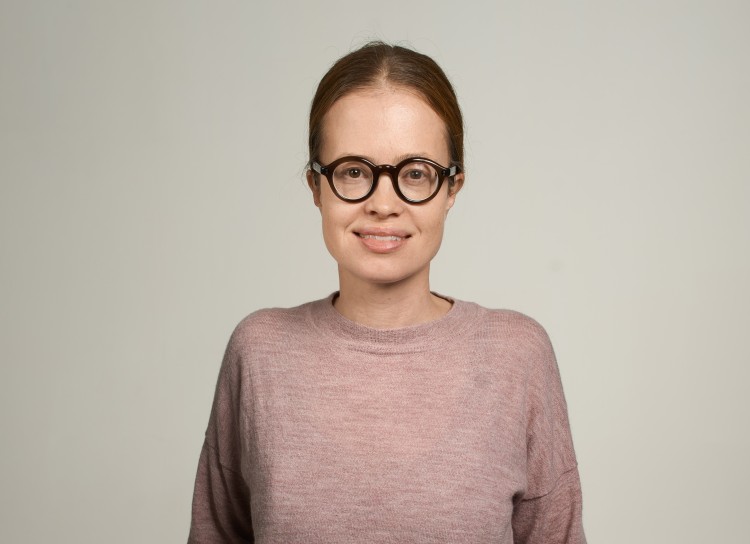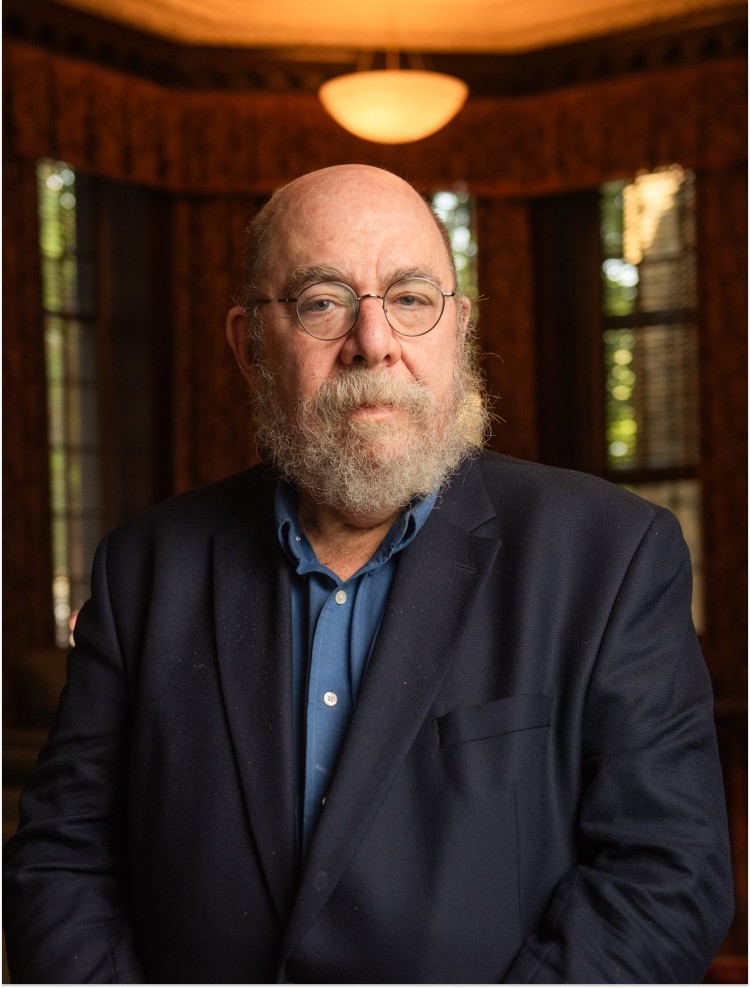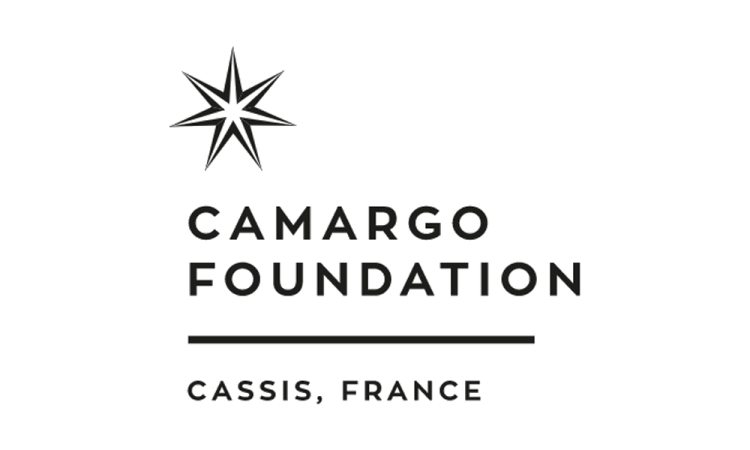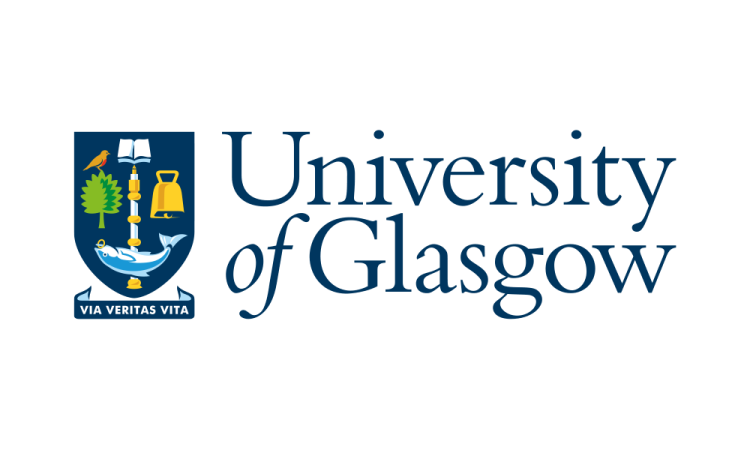About
Assisted Lab is a research group based at University of St Gallen, Switzerland, with research affiliates in Canada, Northern Ireland, and the Netherlands, which investigates the cultural productions – including films, texts, and other media – that influence the legal and political processes around assisted dying.
Bringing together scholars, healthcare professionals, patients, and artists, our transnational, comparative project engages with the multilingual spaces and cultural contexts in which end-of-life accounts are elaborated. It disentangles how they affect law-making and, in turn, shows how a given legal context creates the possibilities of giving meaning to death.
Our news and art collaborations pages list our recent events and publications, and in our podcast series we talk with interested parties from a range of perspectives, from academics to poltical actors, physicians and affected family members. A main focus of our work is the source material contained in our archive, a continually evolving project tracing the legal resonance of cultural objects. While the body of material of which we are currently aware is extensive, we are conscious that, as legal, political and societal discussions in various countries evolve, there will inevitably be new cultural material produced, which merits consideration for the ways it is shaping medical, legal and political discourses of assisted dying. Because we do not host content, we rely entirely on external sources for the cultural work, the accessibility of which can change over time. We are always keen to hear about new material that archive users feel should be included within it and very much encourage you to suggest new content by clicking the 'Participate' button on our site.
During the European Research Council (ERC) selection process, the shorthand for this project, originally entitled Assisted Dying in European Writing and Visual Culture: Reciprocal Interactions between Law, Medicine and the Arts since 2000, was ‘Assisted’. Given our base at the University of St Gallen, home to a number of research ‘labs’ – a naming practice associated with the evidence and drive for innovation of the natural sciences – we decided to call our project ‘Assisted Lab’.
We understand assistance as a basic condition for life in society, and the assistance we are concerned with is the material and practical help provided by a healthcare professional, relative, or volunteer to a patient at the end of their life. ‘Assisted dying’ refers both to instances when a lethal substance is administered by a physician and by the patient themselves, which have distinct – and complicated – histories. But to use the word ‘assisted’ means taking a stance in the at times polarized debates around the semantics of dying.
Physician-administered death is, at times, referred to as (active) euthanasia, which derives from the Greek and means a ‘good death’, or the facilitation thereof. But since the mid-twentieth century euthanasia has been conceptually linked with the eugenics of the Nazi regime and its secret program, overseen by medical professionals, to murder selected members of the population. Meanwhile, the term suicide, in the context of ‘assisted suicide’, retains the tragic connotations of a person – often a young person – in a state of crisis, who chooses to end their life, sometimes because of a lack of interpersonal or professional intervention. The terminology of ‘assisted dying’ (or ‘medical assistance/aid in dying’) is, therefore, doubly euphemistic: it simultaneously sidesteps both the difficult connotations of ‘euthanasia’ and of ‘suicide’, while – in many legal jurisdictions – encompassing both practices.
The semantics of (assisted) dying continue to be hotly debated. For instance, ‘Death with Dignity’, one of the largest right-to-die organizations, seeks to associate what is tantamount to voluntary euthanasia and assisted suicide – rather than, say, palliative care – with the notion of a dignified death, while maintaining that both suicide and euthanasia are inaccurate terms for the practices for which they are advocating.[1] Concurrently, other fields dealing with the end-of-life, but using very different epistemological assumptions, have also made ‘assistance’ one of their key terms. Palliative care, for example, frames its services in reference to assistance, home, and care, and understands assistance as help during continued life. The ambivalence and tension around assistance – and our desire to better understand it – is a further reason for our choice of the name ‘Assisted Lab’.
[1] https://deathwithdignity.org/resources/assisted-dying-glossary/, retrieved 22 January 2024.
As an academic research project, we advocate neither for nor against assisted dying. Rather, we aim to explore, in the tradition of the critical medical humanities, how assisted dying is constituted at multiple levels. Our starting point is that the conditions of the world we know and live in inform the choices we make about our well-being. Crucial concepts and practices, including assistance, autonomy, and dignity are therefore co-produced alongside specific kinds of knowledge and material conditions. On this basis, we conduct a comparative inquiry into how the end-of-life is experienced individually and managed at a societal level.
Furthermore, we seek to draw attention to how the expertise of law- and policy-makers relies on lived and narrated experiences. In so doing, we are concerned with questioning traditional notions of expert knowledge in a democratic society. We therefore aim to cultivate partnerships and to provide a platform in which exchange and deliberation can occur. By making the archival material accessible, we provide a forum which allows website visitors – whether researchers, teachers, artists, legal and political actors, or patients and their carers – to identify with the issues portrayed, to engage with related experiences in other national contexts, and to join the conversation around practices of assistance at the end of life.
In 2018, the Lancet Commission on the Value of Death stated that we need to gain a better cultural understanding of the ways in which societies think about death and dying if we want to improve medicine’s relationship with death. In gathering together, and making accessible, the stories of assisted dying, we are attempting to fulfill part of this mandate. While right-to-die organizations often publish references to books and films in line with their interests, and organizations concerned with death and end-of-life more generally offer references reflecting a wider variety of perspectives, there is, to our knowledge, no other project that 1) depicts the cross-over between the stories and law of assisted dying and law, and 2) compiles these stories while retaining a critical perspective on aesthetic self-fashioning and archival practices themselves.
The archive’s focus is on post-2000 cultural production that deals with the topic of assisted dying in various countries and languages. While we mainly engage with material that resonates within political and legal contexts, we also feature artistic works that (so far) have had a limited impact on societal debates. We also include some selected pre-2000 materials, because 1) they influenced discussions about assisted dying at the time they appeared and/or 2) they have resurfaced in recent deliberations. Assisted Lab does not require full access to a given work in order to feature it on its website. This allows us to be as comprehensive as possible and to include otherwise marginalized voices. However, this practice only concerns a small number of entries of particular social and legal resonance.
We understand cultural production to include diverse items (literature, art, theatre, film, radio, video and the like) that are produced both by cultural industries or authors themselves. But as the problems with access mentioned above imply, the boundaries between cultural, legal, and patient actors are not always clear. These products communicate (often personal) narratives, and are embedded with (often invisible) values, beliefs and assumptions that sustain or challenge existing cultural practices. Our materials are represented digitally, but many exist outside of the digital realm. While each cultural product in our archive tells a story about assisted dying, they are not all stories of a narrative kind. For example, the 2014 sculpture of assisted dying activist Ramón Sampedro constitutes a visual reference in the archive, even if it is connected to and generated by the story of Ramon Sampédro and the subsequent film Mar Adentro.
The archival project began with the examples of published autofiction and documentary films. But with regards to medium and genre, the question consistently came up: only books and films? Why not a play, a song, or a short story? Or what about a TikTok video, an audio recording, a blog post, or a radio reportage? Paying attention to more marginal forms of cultural production fits well with recent trends in cultural studies towards transmediality, and in legal studies which acknowledge the importance of cultural production. It is also congruent with a more democratic approach to cultural production, which acknowledges that more established works – a full-length book, say – require time, resources and a certain degree of privilege to author. However, including more ephemeral forms of culture means that some have, for example, existed online and since disappeared.
At present, the entries range from what may be called traditional literary texts (a play, a novel) to documentary films, radio plays, TikTok videos, and songs. Our archive therefore constitutes a multimedia corpus that contains, but often goes beyond traditional categories, such as, for example, ‘literature’. Although transmediality is not a condition for inclusion in our archive, it is a characteristic that many entries share. To take the example of Anne Bert, a French author turned assisted dying activist following her diagnosis of ALS, she started her work on assisted dying with an open letter to the French President, which was then followed by her book and, finally, the production of a documentary film. What all entries share is an element of ‘self-fashioning’, namely a process of identity-construction and an effort to imitate or gesture toward a particular conception of what constitutes a ‘good death’.
The inherent partiality of our endeavour, claiming that our repository of films, songs, books, and other cultural production constituted an ‘archive’ triggered in us a deep sense of imposter syndrome, but it also led us to consider, at a more theoretical level, how carefully constructed any archive’s claim to knowledge must be. Indeed, every archive is an uncertain and constantly shifting repository of knowledge. Discussions within the Assisted Lab team about whether a story about assisted dying meets the conditions for entering the archive have made this clear to us. We keep a list of ‘potential entries’ – a list illustrating that knowledge production entails choices.
Archival entries are made up of a short text summarizing the story of assisted dying at stake in the given cultural product, as well as outlining the legal context in which it was conceived. An entry also contains references to the law-making documents and interest group publications in which the product has been cited, and a selective list of reviews published in diverse media. The links showing how a work has been referenced in parliamentary debates, for example, shed light on the connections between these stories and law-making processes. Some works are repeatedly cited in parliamentary discussions, by interest groups, and, at times, even in legislation itself. And yet, not all of them are.
The legal contexts we cite vary markedly: they range from an email written by the daughter of an assisted dying advocate author of a widely read blog post, to a discussion within a special parliamentary committee on the topic, to the intervention of a senator recalling the trajectory of ‘heroes’ and how their stories shaped the trajectory of laws on assisted dying. They range from window-dressing – a passing reference to a documentary film by a member of parliament - to, as in Anne Bert’s case, verbatim citation of a cultural production and even the active co-authoring of a law bill.
Despite this variety, citations and reuse of stories always serve a storyteller’s purpose. Stories cited in law-making are never reproduced in their entirety, but rather flattened to make a particular point. Sometimes, the stories already undertake this flattening/narrowing themselves. Thus, the recalcitrant, non-cooperating relative may be written out of what might seem to be a textbook case of a dignified assisted death. Recurring throughout the entries, therefore, is our intention to illuminate the nuances and ambivalences contained in various cultural products, and to show how these cannot be entirely overcome. At the same time, we demonstrate how their interpretation and referencing in legal and political processes tends to narrow the portrayal of assisted dying in these works. In this way we seek to illuminate the processes whereby culture and its norms are expressed in law.
Given that our archival entries do not give access to the work itself, i.e. republish it online, how do we do justice to it in a short summary, particularly given that the goal of the archive is to add nuance to the discussion? This question is one that we have grappled with as a team, particularly as the summarizing paragraphs take away nuance by focusing mainly on (narrative) content, thereby glossing over form, which is so central to discussions of aesthetics. In the archival entries, a cultural scholar will inevitably find too light the coverage of the aesthetic qualities of the works under discussion, while a legal scholar will likely find the explanations of the works’ legal significance overly superficial. And yet, by meeting somewhere in the middle of the various viewpoints, the entries that appear in the archive manage to speak to both disciplines – and to many more, not least medicine – in a way that, although perhaps slightly frustrating for the specialist, serves as a jumping-off point for further discussion. As such ‘the archive’ is not only a steppingstone toward future research (for other researchers) but also our laboratory, allowing us to experiment with what we decide to say or leave unsaid about a particular cultural product.
Often, the stories of assisted dying come down clearly on one or another side of the debate. Prior to legalization, the stories of assisted dying almost invariably chronicle the desires of patients to ‘die with dignity’ and be able to take autonomous decisions with regard to end-of-life choices. These stories are written to plead for legalizing the practice of assisted dying and they often contain fears about modern medicine, frequently generated by a bad medical experience. In what we call ‘first wave’ stories, including Invasions Barbares or Mar Adentro, we find stories of individuals that advocate for a change in the law on the basis that current provisions are inadequate to meet their needs, and infringe on their dignity and free will.
However, following legalization, stories of assisted dying fall into several different categories. Some – call them ‘second wave’ stories – are concerned with the problematic effects of the law as it currently stands. In the Canadian context, for example, stories such as Is it too easy to Die in Canada? are mobilized for social justice aims, to highlight those whom the law’s current safeguards fail to protect. Such stories have become symbolic for critics who warn that applicants for assisted dying feel that their lives are unbearable only because their government is not offering them the help that they need.
Other post-legalization stories advocate for further expansion of the law, in similar -- though more controversial – iterations of the rights claims of the first wave, in what might be called a ‘third wave’. These cultural products reflect on how, for example, having a mental illness as a sole underlying medical condition, or being underage, makes the author ineligible for assisted dying and causes them much suffering. For example, Ernst Fredriksen, in a poem ‘A Glimpse of My Hell’, reflects on how devastated he is because he is not allowed to access assistance in dying.
Finally, other stories are conceived as taboo-lifting or nuancing stories, that aim to make the realities of (assisted) death visible. Such stories might aim to show, even in a societal context where assisted dying is legal and widely accepted, the granularity of an assisted death. For example, Ruth Steinberg’s photographs of her friend Alma Norman, in the months leading to her death, capturing the small details of her everyday life – including going through old letters, wearing adult diapers – illustrating what the life of someone looks like who has decided, in a socially sanctioned way, that they do not want to live anymore. In Switzerland, where assisted suicide has been practised since the 1980s, several stories reveal the ambivalences of the decision, showing how assisted suicide is always embedded in social and family structures. The autofictional novels by Nicola Bardola (Schlemm, 2005) and Pierre Béguin (Vous ne connaitrez ni le jour ni l’heure, 2013), for example, illustrate the strong emotional burden that the parents’ decision to end their lives together with the help of an assisted dying organisation places on their sons.
If stories in the archive serve different purposes, how are we to reflect on this diversity in the archive? An empirical reflection on how many stories advocate for assisted dying, and how many are against it seems impossible, due to different cultural, healthcare and legal contexts and histories, but also because even a story that is supposedly pro-assisted dying and part of what we have described as first-wave is rarely black-and-white (see Mar Adentro, where Manuela Sampedro never comes round to accepting Ramón’s decision). Furthermore, there is a reciprocal interaction between the stories that are generated by a given legal and social situation. Indeed, we consistently noticed that advocates of assisted dying, often but not exclusively white and privileged, were more likely to have the necessary time and resources for more ‘traditional’ contributions. Critiques of current assisted dying practices and their (lack of) safeguards were more likely to produce works on the margins of traditional cultural production. But this also led to an imbalance in content – were we concerned first and foremost with the ‘first wave’ stories of elite advocates of the right to die? Were the multimedial stories critiquing assisted dying, which encompassed a broader range of socio-economic and personal backgrounds, not of equal relevance? All this led us to a further set of inter-archive questions.
As an academic, nonpartisan research lab, we considered whether we should balance out the entries in the archive (pro / contra). Yet including more entries against assisted dying does not reflect the state of societal opinion on the issue and would also be a false weighing of material, as there is (currently) more cultural production largely in favor of the legalization of assisted dying than there is against it. Different team members in our research group have different (personal) views on assisted dying and we seek to question our own judgement/positioning/bias within the debate. This led us, for example, to assign the task of reading finished entries to a team member acting as ‘neutrality arbiter’, seeking to remove any linguistic formulations that might reflect bias.
Our archive traces a changing moral and legal understanding of death and the role that medicine is made to play within it. With more countries opting for legalizing some form of assisted dying, we envisage the archive will grow in both first and second wave stories. The ‘Participate’ button signals a citizen science component in as much as our growing corpus, the basis of our archive, depends on recommendations from the public. As the amount of stories we have discovered already exceeds our capacities to create entries that do the material justice, we have opted to go live with a small number of entries and publish one story at a time and at various intervals during the project’s lifetime.
Members of Assisted Lab have repeatedly had the following experience: when asked by colleagues at the coffee machine, or new acquaintances, what they are working on, the answer ‘assisted dying’, has immediately prompted their interlocutor to mention a cultural product – for example, the film How to Die in Oregon – which made a strong impression on them. This might seem anecdotal, confined to how any layperson might react to assisted dying, but lawmakers and legal actors, too, regularly cite the impact that the stories of assisted dying have had on them. For example, as Canada prepared to legalize the practice in 2016, a Canadian parliamentarian, appointed to a committee on physician-assisted dying, recalled that when he shared with his wife, a physician, that he was being put on this committee, she immediately sent him a YouTube link to the story of Donald Low. Low, a renowned Canadian scientist, sought to make the public aware of the helplessness he felt while dying, and his hope that the country would soon legalize physician assisted suicide, in a short video recording made in the final days of his life. The author of a brief to Québec’s Assemblée nationale on the topic of assisted dying observed that the subject of medical assistance in dying has been of the utmost concern to her since she saw a 2004 documentary about Manon Brunelle, a Québecois woman who chose to end her life in Switzerland.
As discussed with colleagues working on the stories influencing legislation around gender rights and drug use, we do not think that the use of stories in law is unique to assisted dying, but rather crops up in all legal processes that deal with topical and emotionally-laden societal issues. Yet within these different contexts, it is clear that the stories of individuals – not just the stories as ‘cases’, but personal narratives either in autobiographical or fictional mode – are used as justificatory evidence in a way that is often analogous with facts. If a story is ‘true’ or refracts a certain truth, then its narrative identity tends to blend with that truth. In a book on this cross-pollination, When Law Goes Pop: The Vanishing Line Between Law and Popular Culture (Chicago, 2000), legal scholar Richard K. Sherwin has argued that stories ‘pollute’ law-making. What our sources demonstrate is that, on the whole, this ‘pollution’ is not only recurrent when it comes to assisted dying but also welcome and revered, albeit rarely reflected upon.
Team
Anna Elsner

Principal Investigator
Assisted Lab’s principal investigator and associate professor of French Culture and Medical Humanities at University of St Gallen, Switzerland. Anna’s research focuses on death, dying and mourning in literature, philosophy and film. It has been supported by the AHRC, the ERC, the Leverhulme Trust, the Swiss National Science Foundation and the Camargo Foundation.
Vanessa Rampton (she/her)

Senior Investigator
Senior Investigator who contributes conceptual oversight to Assisted Lab’s projects. Vanessa has been an ETH Fellow, a Branco Weiss Fellow, & worked at McGill University, ETH Zurich, & University of Zurich. She studied in Geneva, London, and has a PhD in intellectual history from University of Cambridge. She is interested in how contexts shape ideas, and vice versa.
Marc Keller (he/him)

Investigator
Post-doc responsible for Assisted Lab’s archive of materials from Germany, Switzerland, and Austria. Marc holds a PhD in German Literature from the University of Bern, Switzerland, and his methodological focus is on narratology, rhetoric, and intertextuality. His theoretical interests are in narrative ethics and how artistic works influence social debates.
Jordan McCullough

Investigator
Post-doc responsible for Assisted Lab’s archive of materials from francophone Europe. Jordan holds a PhD in French literature from Queen’s University Belfast and was previously a visiting researcher at the University of Glasgow and Newcastle University. He is Associate Editor of The Polyphony, and Outreach Officer for the ASMCF. → twitter.com
Alexander Meienberger

Financials and Administration
Responsible for all financial and administrative aspects of Assisted Lab. He graduated from the University of Konstanz and has a PhD from the University of St Gallen. His research interests include Russian and Eastern European culture, literature, and philosophy of the 19th, 20th and 21st centuries. → twitter.com

Associate Team Members
- Faiz Elahi, Research Assistant, MA in English, McGill University, Canada, 2024 - 2025
- Karen Zhiyi Ren, Research Assistant, PhD student, Film Studies, University of Toronto, Canada, 2024-2025
- Carlos A. Pittella, Research Assistant, MA in English & Creative Writing, Concordia University, Canada, 2024 - 2025
- Davina Toledano, Research Assistant, BA in Philosophy and History, McGill University, 2024 - 2025
- Sophia Rüfer, Research Assistant, MA in General Management, University of St Gallen, 2024 -
- Joe Wood, Research Associate, King’s College London, UK, 2024
- Wouter Schrover, Research Associate, Lecturer, Open University, Heerlen, the Netherlands, 2024
- Robyn Otto, Research Assistant, BCL/JD, Law Faculty, McGill University, Canada, 2023 - 2024
- Charlotte Frank, Research Assistant, PhD Student, English Department, McGill University, Canada, 2023 - 2025
- Jacob Shannon, Research Assistant, BCL/JD Student, Law Faculty, McGill University, Canada, 2023
Advisory Board
Daniel Weinstock

Holds the Katharine A. Pearson Chair in Civil Society and Public Policy, McGill University, Montréal, Canada. → mcgill.ca
David Clark

David Clark is Professor of Medical Sociology at the University of Glasgow’s School of Interdisciplinary Studies in Dumfries and has wide-ranging interests in end of life issues in the global context.
Brian Hurwitz

Brian Hurwitz is an emeritus professor of medicine and the arts at King’s College London. Professor Hurwitz’s research interests encompass clinical medicine and narrative studies in relation to medical practice, ethics, law and the literary interface between medicine and humanities and arts disciplines. → kcl.ac.uk
Nancy Berlinger

Nancy Berlinger is a senior research scholar at The Hastings Center and a Hastings Center fellow. Her current scholarship and empirical research focus on ethical, societal, and global dimensions of population aging, with special attention to dementia care and to housing equity for older adults. → thehastingscenter.org
Funding
Assisted Lab is supported by European Research Council (ERC) Starting Grant 101040399, evaluated and selected by the ERC, financed by the Swiss State Secretariat for Education, Research and Innovation (SERI). The lab and its members have also benefited from other grants and affiliations.










Related Projects
- Globalizing Palliative Care → globalizingpalliativecare.com
- Film and Death: Film-Philosophy as a Mediation on Death → filmdeath.fcsh.unl.pt
- End of Life in Place → uc.pt
- Acting out Disease: How Patient Organizations Shaped Modern Medicine → actdisease.org
- Going Viral: Music and Emotions during Pandemics (1679-1919) → goingviral.hypotheses.org
Contact
- For all inquiries, contact us at → medhum@unisg.ch
- Contect with us on Bluesky → bsky.app
- Read our latest newsletter → mailchi.mp